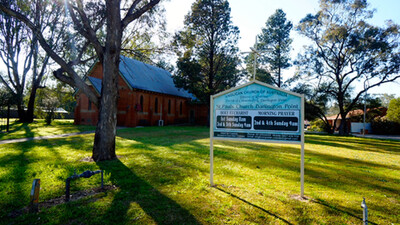
Australia
I spent my puberty and formative years in the state of NSW in Australia, at the height of far-right politician Pauline Hanson’s power. I have many unpleasant tales of the lived interiority of ethnicity to tell, but I am determined to never bore you with them. I do not remember. My former assistant Marco used to say when bad things happen, “it’s character building.”
What I do remember with fondness is driving for long distances in the dark, past midnight, to unknown places, to meet unknown people. It was the age of IRC chat-rooms, which facilitated many closeted teenagers’ sexual enlightenment. When urges called I’d wait until the parents are asleep, then sneak out with the family vehicle, map and torch in hand, and drive up to two hours to some random older boy’s or man’s house – mostly white, more often man than boy. In darkness every sound is amplified. Our garage roller shutter made the most ridiculous noise. It is a sound that I had since learnt to associate with the feeling of guilt.
I landed in the airport of Melbourne on a Saturday evening. Five hours of non-stop driving later I reached Darlington Point in rural NSW, a community of 1000 inhabitants, near the college town of Griffith. My purpose was to visit the St. Paul’s Anglican Church, which has in its possession a bell that came from the mission of English Rev. John Brown Gribbles, also known as the Warangesda Mission. The mission, which was established in 1880, provided services and education to the Aborigines of the area until it was disbanded in 1924. In the early 20th century black Australians were essentially barred from public education. School bells all over Australian rung only for white children. Some believed that the mission did good work for the people of Warangesda. But indigenous historian Philippa Scarlett, who I connected to through her blog, contested these claims. In an email she wrote, “Gribble’s dairies recorded that he beat and imprisoned young women…and expulsion was a weapon used throughout the mission’s history. Little boys were beaten.” The quality of the education provided by the mission was uneven. Like the Kengeleni Bell in Mombasa, there had also been attempts by some members of the Warangesda people to repossess the mission bell at St. Paul’s.
I arrived at St. Paul’s severely sleep deprived. Shortly before 9 am I was greeted by Mrs. Hutchins, who rang the bell for me and informed me that Rev. Sue Chilvers will not be joining us. I stepped inside of the modest chapel. Five other members, including Mr. Hutchins, showed up for the morning prayer. I had never attended a service without a clergyman, but I was an Anglican school boy so the proceedings were familiar to me. Afterwards Mrs. Hutchins showed me two beautiful volumes of bible that belonged to the mission. They spoke positively of Gribbles. In the afternoon I interviewed Heather Edwards, the daughter of an original member of the mission. She also spoke well of the mission, and dismissed the bell repossession efforts as misguided. After the mission was disbanded, the children of the mission were relocated to mixed race schools. Heather recounted that at her school, several white families demanded that special “no-blacks” toilets be constructed for their children.
This I do remember: I was the last to step inside of an elevator filled with other school children. A boy towards the back yelled “no Asians in the elevator.” Infuriated, I turned around, searched hard in my head for a counter-insult, but then I said nothing. Had I answered back, the boy would have made my thick accent the new subject of his ridicule. So I worked hard on writing. Writing is not something that comes naturally to me. But it is easier to hide one’s accent on paper.
To listen to the other recordings from this stop, please visit: soundcloud.com/samsonyoung/sets/for-whom-the-bell-tolls-darlington-point-australia


